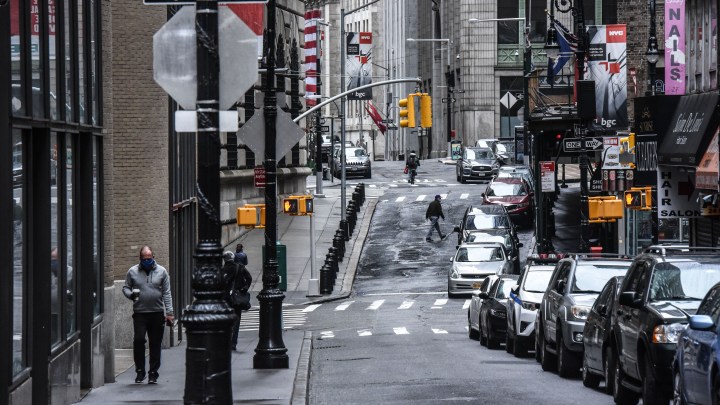
Business districts face an uncertain future as return-to-office is delayed
Business districts face an uncertain future as return-to-office is delayed

After more than a year of remote work, companies are continuing to reevaluate their office real estate.
State Street, the international asset manager, is one of the latest to announce it’s closing its offices in New York City. And with the delta variant surging, other companies are pushing start dates farther into the fall, including BlackRock, Wells Fargo and others.
So what’s happening in those business districts, and what will the impact be outside of those tall office towers?
The ripple effect has three stages: The first, of course, is the pebble plunked into the water. That’s how many people are physically going to work.
The average office occupancy in the United States right now is about 30%, according to JLL, a commercial real estate firm. That number likely won’t jump too high anytime soon, said JLL’s chief research officer, Ben Breslau.
“We’ve seen some companies push those dates back either to October or some of them back to January,” he said.
January, which brings us to the pebble’s first ripple: all the restaurants and retail stores that rely on in-person office workers.
“Having the return to office pushed back further means it’ll be a little longer for that recovery,” Breslau said. He guesses that recovery for restaurants and retail will be sometime into 2022, and this has a lot of people thinking about whether business districts that so heavily identify as corporate neighborhoods will work anymore.
“Well, the pandemic really revealed the ecosystem of a downtown,” said Michael Edwards, president of the Chicago Loop Alliance. “So everything’s connected, right? There’s no workers, so then the restaurants depart, and when there’s no restaurants, people are saying, ‘Why should I come back downtown to work?'”
But when businesses move out, other businesses and people can move in to live, study or play. That would be a win for the final ripple in the pond: cities themselves. Because Edwards said that when you add up sales tax, property taxes and parking tickets, Chicago’s business district, the Loop, accounts for almost one-third of the city’s tax revenue.
“In most cities, they’re the economic driver of a city’s budget. And therefore they need to be protected if the city’s going to survive,” Edwards said.
Chicago has made some progress; there are now about twice the number of people living in the Loop than there were a decade ago. But the city has to diversify more to cope with the changing nature of office work, Edwards said.
There’s a lot happening in the world. Through it all, Marketplace is here for you.
You rely on Marketplace to break down the world’s events and tell you how it affects you in a fact-based, approachable way. We rely on your financial support to keep making that possible.
Your donation today powers the independent journalism that you rely on. For just $5/month, you can help sustain Marketplace so we can keep reporting on the things that matter to you.











